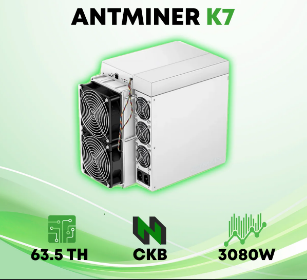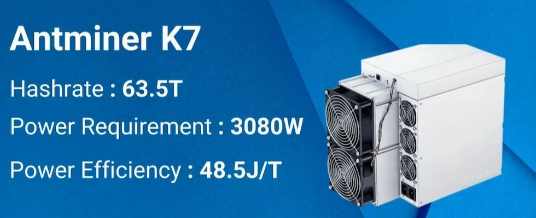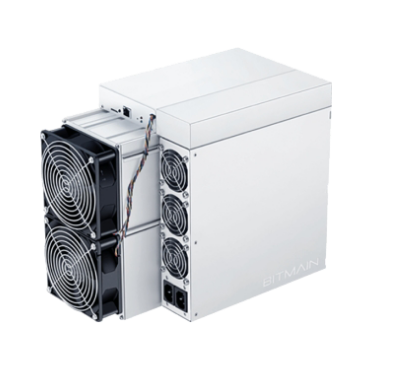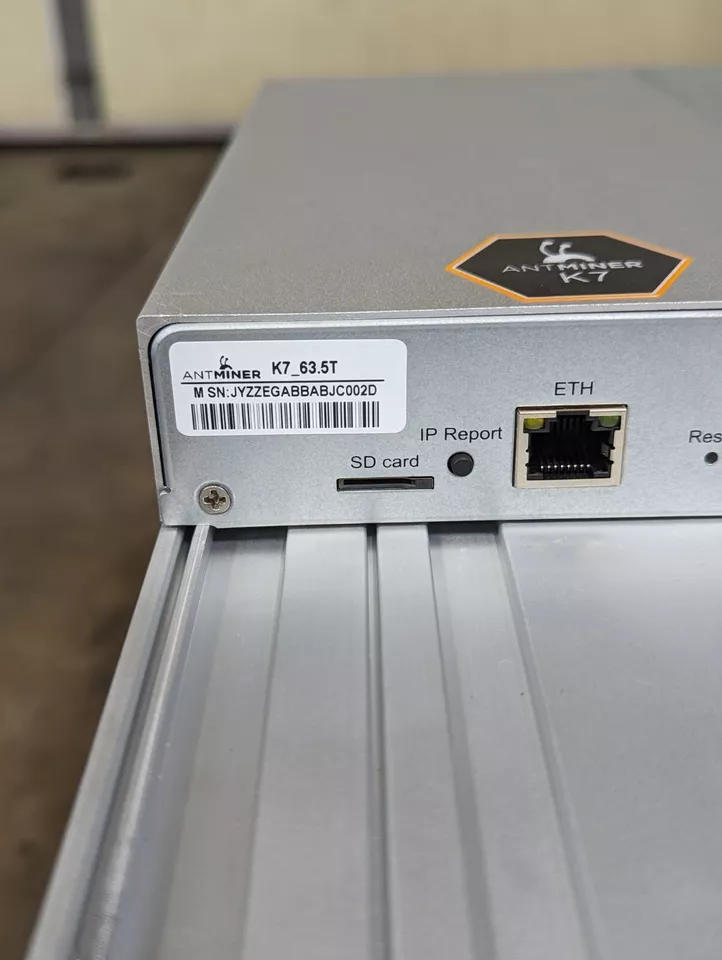What Are the Installation Requirements for CKB Miner K7 in a Mining Facility?
The CKB Miner K7, developed by Bitmain, is a state-of-the-art mining solution designed for the Eaglesong algorithm, which powers the Nervos Network’s CKB cryptocurrency. With its impressive hashrate of 63.5 TH/s (±3%) and energy efficiency of 48.5 J/TH, the K7 is a top choice for miners looking to maximize profitability. However, to fully leverage its capabilities, proper installation within a mining facility is critical. This article explores the key installation requirements for the CKB Miner K7, ensuring optimal performance, longevity, and operational efficiency.
Understanding the CKB Miner K7: A Brief Overview
Before diving into installation specifics, it’s essential to understand the K7’s core features and design. The miner is equipped with 276 advanced hash chips distributed across three hash boards, delivering exceptional computational power. Its dual AC input (200-240V, 50-60Hz) ensures flexibility in power supply, while its compact dimensions (430 x 195.5 x 290mm) make it suitable for high-density deployments. Additionally, the K7 operates within a broad temperature range (0-40°C) and humidity tolerance (10-90% RH, non-condensing), making it adaptable to various environments.

Given its technical specifications, the K7 demands careful planning during installation to ensure it operates at peak efficiency. Below, we outline the key requirements for setting up the CKB Miner K7 in a mining facility.

Power Supply Requirements
Stable and Adequate Power Capacity
The CKB Miner K7 consumes 3080W (±5%) under typical operating conditions. This high power draw necessitates a robust and stable power supply. Miners must ensure that their facility’s electrical infrastructure can handle the total load, especially when deploying multiple units. Overloading the power supply can lead to inefficiencies, downtime, or even equipment damage.
Dual AC Input Configuration
The K7 features a dual AC input design, allowing for redundancy and improved reliability. Each input requires a 200-240V, 50-60Hz power source. It’s crucial to connect both inputs to separate circuits to ensure uninterrupted operation in case one circuit fails. Using high-quality cables and connectors rated for the miner’s power requirements is also essential to prevent overheating and electrical hazards.
Power Distribution Units (PDUs)
For large-scale operations, Power Distribution Units (PDUs) are highly recommended. PDUs help manage and distribute power evenly across multiple miners, reducing the risk of overloading individual circuits. They also provide surge protection, safeguarding the K7 from voltage spikes that could damage sensitive components.
Cooling and Ventilation
Efficient Airflow Management
The CKB Miner K7 generates significant heat during operation, necessitating effective cooling solutions. Proper airflow management is critical to maintaining optimal operating temperatures (0-40°C). Miners should position the K7 in a well-ventilated area with adequate space between units to allow for unobstructed air circulation.
Cooling Systems
In addition to natural ventilation, active cooling systems such as industrial fans or air conditioning may be required, especially in warmer climates. For large facilities, immersion cooling or liquid cooling systems can provide superior heat dissipation, enhancing the miner’s performance and lifespan.

Dust and Debris Control
Dust and debris can accumulate on the miner’s cooling fans and heat sinks, reducing their efficiency and increasing the risk of overheating. Installing air filters and maintaining a clean environment around the K7 can mitigate this issue. Regular cleaning and maintenance are also essential to ensure consistent performance.
Space and Rack Setup
Compact and High-Density Deployment
The K7’s compact design allows for high-density deployments, maximizing the use of available space in the mining facility. Miners can use standard 19-inch server racks to organize multiple units efficiently. However, it’s important to ensure that each miner has sufficient clearance for airflow and easy access for maintenance.

Weight Considerations
While the K7 is relatively lightweight compared to some other mining hardware, the combined weight of multiple units can be substantial. Miners should verify that their racks and flooring can support the total load to prevent structural issues.
Networking and Connectivity
Ethernet Connectivity
The CKB Miner K7 connects to the network via an Ethernet port (10/100M). Miners must ensure that their facility’s networking infrastructure can accommodate the additional load from the K7 and other connected devices. A reliable and high-speed internet connection is essential for efficient mining operations.
Network Security
Securing the mining network is critical to protect against unauthorized access and potential cyber threats. Miners should implement firewalls, VPNs, and other security measures to safeguard their operations.
Environmental Considerations
Temperature and Humidity Control
The K7 operates optimally within a temperature range of 0-40°C and a humidity range of 10-90% RH (non-condensing). Miners should monitor and control these parameters using thermostats, humidifiers, or dehumidifiers as needed. Maintaining the right environmental conditions not only ensures peak performance but also prolongs the miner’s lifespan.
Noise Management
Like most mining hardware, the CKB Miner K7 generates noise during operation. In large-scale facilities, this can become a significant issue. Miners can mitigate noise by using soundproof enclosures or locating the facility in a remote area.
Maintenance and Support
Regular Inspections
Routine inspections are essential to identify and address potential issues before they escalate. Miners should check for loose connections, dust buildup, and signs of wear and tear on components such as fans and power supplies.
Spare Parts and Repairs
The K7’s modular design simplifies repairs and part replacements. Miners should keep essential spare parts on hand, such as fans, power supplies, and hash boards, to minimize downtime. Partnering with a reliable service provider like Minerfixes can ensure access to high-quality parts and expert repair services.
Software Updates
Bitmain periodically releases firmware updates to enhance the K7’s performance and security. Miners should stay informed about these updates and apply them promptly to maintain optimal operation.
Conclusion
The CKB Miner K7 is a powerful and efficient mining solution that can significantly boost profitability for CKB miners. However, its full potential can only be realized through proper installation and maintenance. By addressing power supply, cooling, space, networking, and environmental factors, miners can create an optimal setup for their K7 units. Additionally, regular maintenance and access to spare parts ensure long-term reliability and performance.
Investing the time and resources to meet these installation requirements will pay off in the form of higher hashrates, lower operational costs, and greater mining success. With its cutting-edge technology and robust design, the CKB Miner K7 is a valuable asset for any mining facility focused on the Eaglesong algorithm and CKB cryptocurrency.